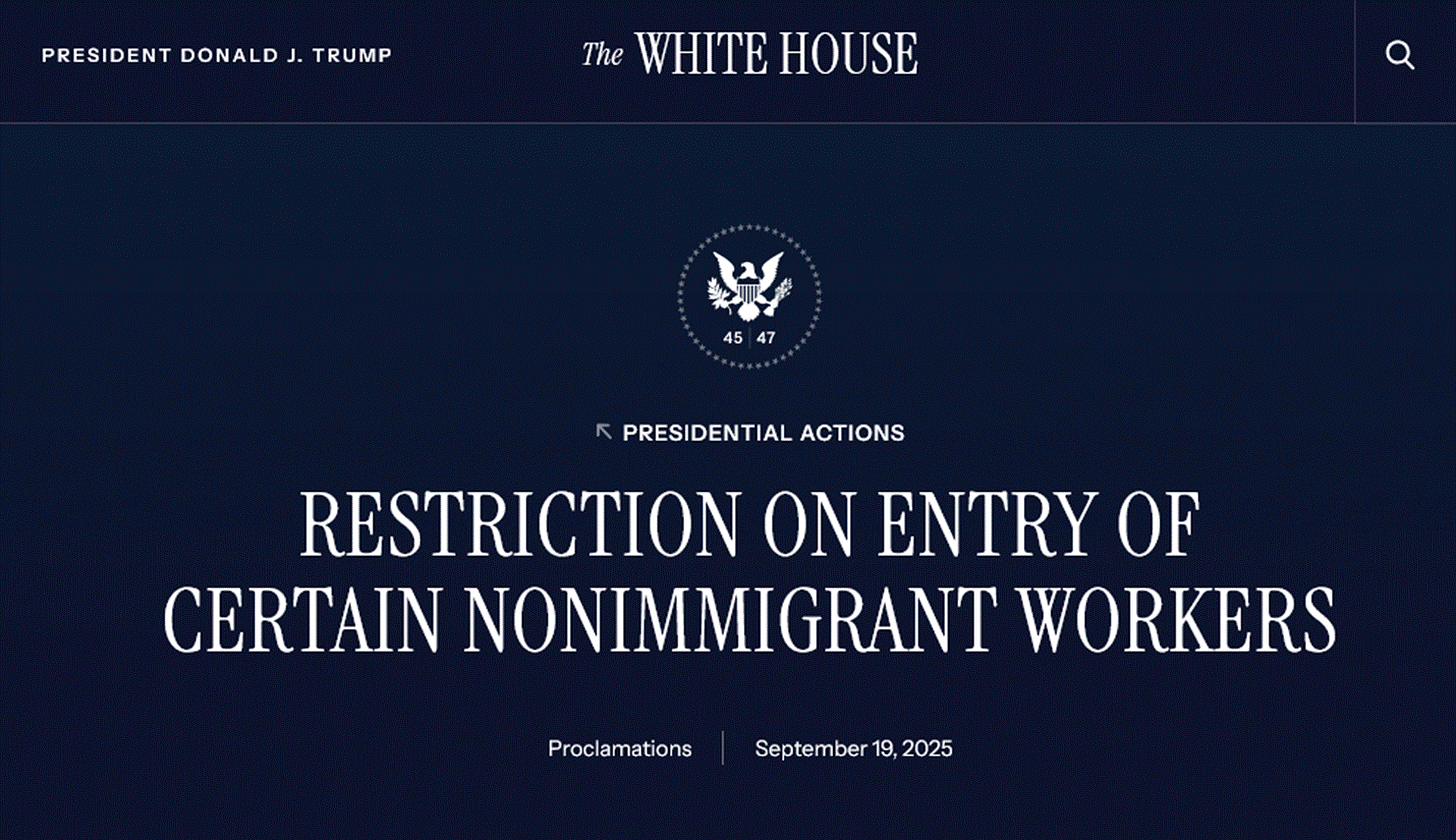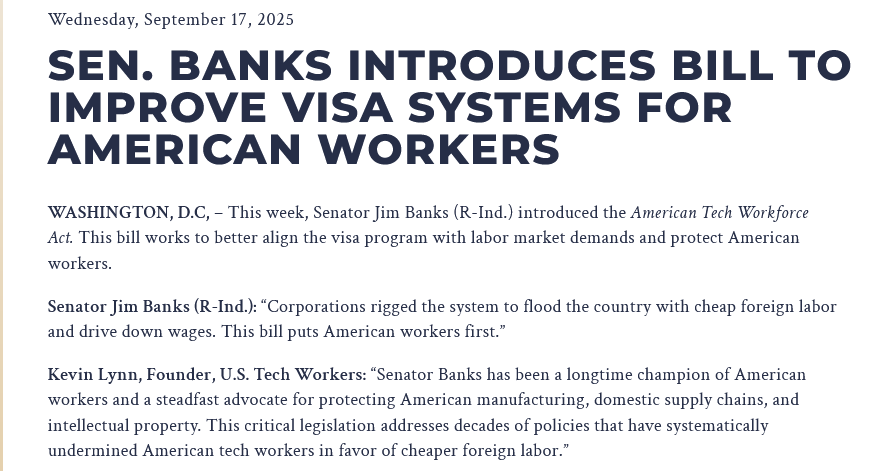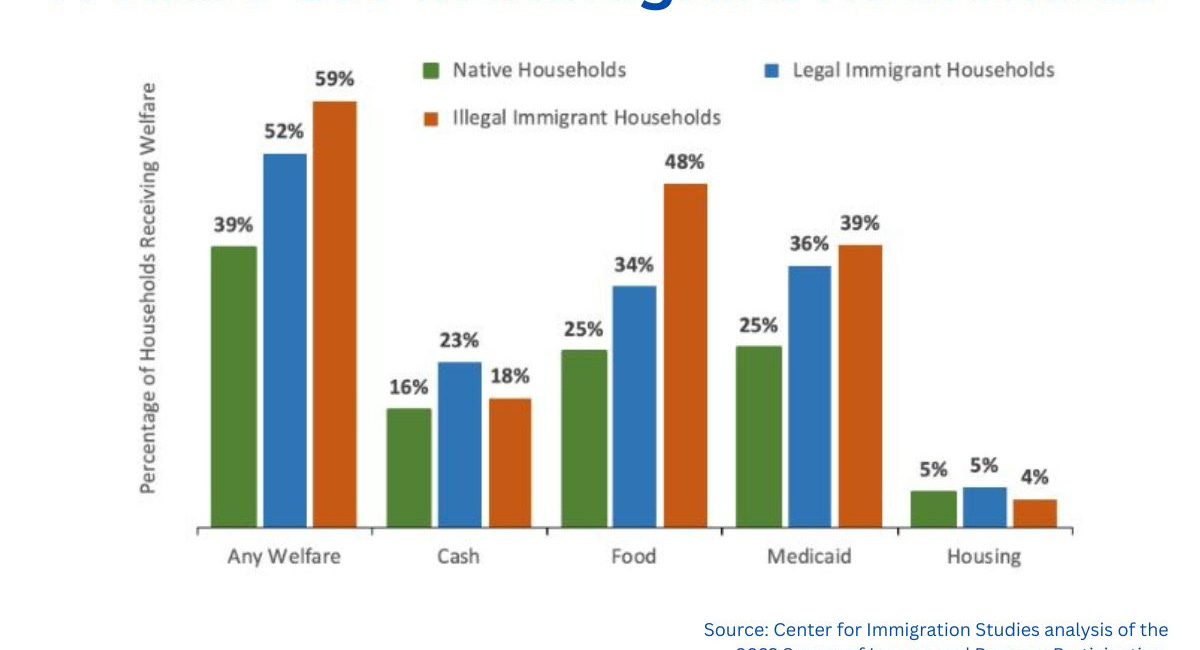In recent weeks the H-1B visa system has finally come under the government scrutiny it deserves. The administration is finally, openly, labeling the H-1B visa for what it is: a scheme to replace American workers with cheaper foreign labor and has moved to put an end to it. This is a great step forward for Americans; and it seems to have inspired other members of government, namely Senator Jim Banks of Indiana to propose further reform of the H-1B visa system. These are great developments.
Trump Fee:
On September 19th the president signed a proclamation titled Restriction on Entry of Certain Nonimmigrant Workers that raised the fee for H-1B visa applications from $1,000 to $100,000 dollars. While the White House originally made it sound as though this fee would be due every year for up to 6 years for an H-1B visa-holder, they later clarified it was only due for new first time applicants.

The White House cited an array of fantastic pro-America justifications for this fee, such as the increase in unemployment among American IT specialists and the fact that numerous companies have in recent years been caught replacing their American workers with cheaper H-1B laborers. In many of these cases the Americans in question have been forced to train their H-1B replacements or risk not receiving severance or other “termination benefits.”
The White House also cited a 2017 study [PDF] that that showed that if we had not imported hundreds of thousands of foreign tech workers, wages for American tech workers would be 2.6% to 5.1% higher. The White House’s justifications for its H-1B visa fee are, in the opinion of this institution, unimpeachable.
In its closing section, the proclamation also instructed the Secretary of Labor to begin a rules revision to examine the prevailing wage levels of high-skilled admissions criteria for H-1B visa applicants. In other words, the administration wants to tighten the definition of “high-skilled” and make sure that those immigrants being admitted are making significantly more than the average American would in the field (to match their needed specialization) rather than significantly less as is currently the case.
Ultimately though, these are Band-Aids on the skin of our badly-infected immigration system. This is not the president’s fault of course. He can only do so much without changes in immigration legislation; and that is the purview of Congress—at least one Congressman is proposing radical change to our failed H-1B visa system.
American Tech Workforce Act of 2025:
On September 16th, Senator Jim Banks of Indiana proposed the American Tech Workforce Act of 2025 (S 2821). The act serves as a wholesale reworking of the H-1B visa system, and it does so in a robust fashion.

In Section 2. of the bill titled “Findings,” the Senator lays out his justification for the act. Among these justifications are the fact that 60% of H-1B visa-holders are making substantially below the median wages of comparable American professions. He goes on to outline how previous administrations have expanded the program such as when the Obama administration established the Optional Practical Training Program to funnel foreign-born graduates of American universities into jobs at America’s largest tech firms. The Senator argues (correctly) that this serves as a tax break for these firms and allows them to keep wages artificially low.
The key reforms in the bill are as follows:
1. It abolishes the Optional Practical Training Program and prohibits the funneling of a foreign-born college graduate to immediate employment. It also prohibits successor programs from being established to replace the Optional Practical Training Program.
2. The legislation requires that any company pay a prospective H-1B applicant the same amount per annum that it was paying an American employee over the previous two years. This wage level is raised to $150,000 per prospective H-1B hire a year after the act is enacted.
3. Restricts H-1B visa duration to 1-year if the visa holder is contracted out to a third-party corporation (a very common practice).
4. Finally, the bill abolishes the H-1B visa system and prioritizes applications based upon the wage level the employer is willing to pay—in effect, creating a bidding system where companies will have to pay extraordinary amounts of money for H-1B workers. This is something they will only be willing to do for people of extraordinary talent or those with unique skill sets.
These reforms are fantastic, though they do not go far enough.
Further Necessary Reforms:
1. End the H-1B to Green Card pathway.
Currently there is no set waiting period for an H-1B visa-holder to apply for a Green Card (permanent legal status). While there is a backlog in processing EB2 Green Card applicants in general, the fact remains that tens of thousands of H-1B visa-holders receive a Green Card every year. This opens the door to foist a great number of family members, otherwise known as non-working dependents upon the American people.
Any immigrant of any status, including those holding an H-1B visa, should have to wait 10 years to apply for a Green Card, subject to in-person interviews and should include a requirement to have not participated in the use of any public welfare program (which immigrants shouldn’t be able to access to begin with).
2. Require Companies to Pay to Replace H-1B Workers and Train Americans.
Reform UK recently announced that employers will be required to pay a fee to train a British worker to replace any foreign worker they hire. The United States should implement a similar policy.
A $38,000 per year fee should be levied on any employer hiring an H-1B visa worker. This fee will be directed toward funding the college or trade school education of an American worker, so they may eventually replace the H-1B foreign laborer. (Reminder: H-1B visas are, by definition, non-immigrant visas meant to be temporary.)
4. Create a Mandatory Site for Job Openings.
Many of America’s largest firms practice “ghost jobs” advertising. They post job openings to obscure, hard to find, and even private job listing websites or newspapers where Americans won’t see them look. This enables them to effectively ignore provisions of current immigration law that require jobs be advertised to Americans for 30 days before a company can justify hiring an immigrant worker. This practice should be abolished.
The American state should create or fund the creation of a “National Jobs Board” (NJB). American corporations would be required to report all job listings/openings to the NJB where they would be advertised for a period of 90 days.
Countries like Sweden already have such state-backed jobs agency. The Swedish Public Employment Service not only maintains a free jobs database; but it works to facilitate interviews between employers and employees, has regional officers to help job seekers, and has a mandate-to -work to reduce overall unemployment in the country.
Ultimately the American people need to build on the movement of Trump’s $100,000 H-1B fee first by passing the bill proposed by Senator Banks, then moving to tighten up the H-1B and other work visas as time passes. The F1 visa is another example of an oft-abused work visa subject to fraud while the family reunification system is abused by every category of visa-holder.
The process of reforming America’s immigration system is a marathon, but we finally appear to be on the right track


